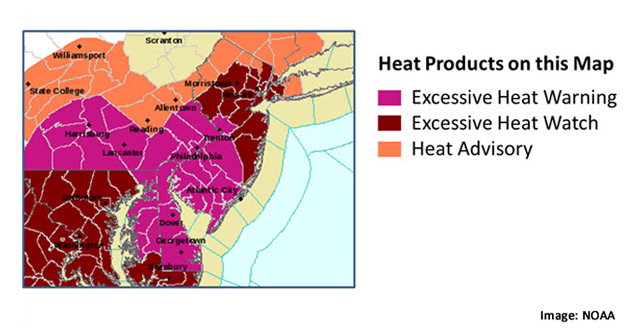The National Weather Service is responsible for issuing forecasts, watches and warnings for a variety of weather and water hazards. A “warning” is issued when hazardous weather poses an immediate threat to life or property. However, the process of issuing a warning varies depending on the type of hazard. This is due to the fact that hazards occur on vastly different time and distance scales. For example, tornadoes typically last a matter of minutes and impact relatively small areas, while Nor’easters can produce blizzard conditions over hundreds of square miles and last for days.
When weather hazards are small in size and develop quickly, forecasters must rely heavily on observational data from Doppler radar, satellite and other ground-based equipment and sensors to inform them during the warning process. This would include such hazards as severe thunderstorms and flash flooding -- where forecasters continuously monitor thunderstorms in real-time and determine where the largest impacts will occur. Forecaster experience and knowledge of the local area also play a large role in the warning process. For example, an understanding of the local creeks, streams and reservoir operations would be crucial when determining whether or not to issue a flash flooding warning.
Tsunamis and solar events are two types of hazards that also require a quick response based on monitoring various observational datasets, such as seismometers to detect earthquakes and potential tsunamis or X-ray telescopes mounted on satellites that can detect solar activity ahead of geomagnetic storms. Once the threat is detected and the forecaster determines a warning is needed, computer software is used to help quickly craft the warning and disseminate the message through a number of communication channels.
A slightly different approach is taken in the warning process for hazards that are larger in scale and slower-evolving, such as hurricanes or low pressure systems that produce winter storms. In these cases, the process hinges on forecasters’ use and interpretation of numerical weather models. There are a multitude of numerical weather prediction models running continuously around the world. Forecasters use this computer-generated output in combination with conceptual models and statistical output to come up with a most likely solution.
Once forecasters’ have high enough confidence there will be significant impacts, a warning is issued in as far advance as possible, for areas that are expected to see hazardous weather. It’s important to note that a combination of observational datasets and numerical models are used in the warning process for all hazards. It is the forecasters’ role to sift through the mountain of data, determine what’s important and issue the warning.
 |
 |
| Heat is a common hazard in which forecasters issue advisories, watches, and warnings. |
Watches and Warnings across the U.S. on the Weather.gov interface |